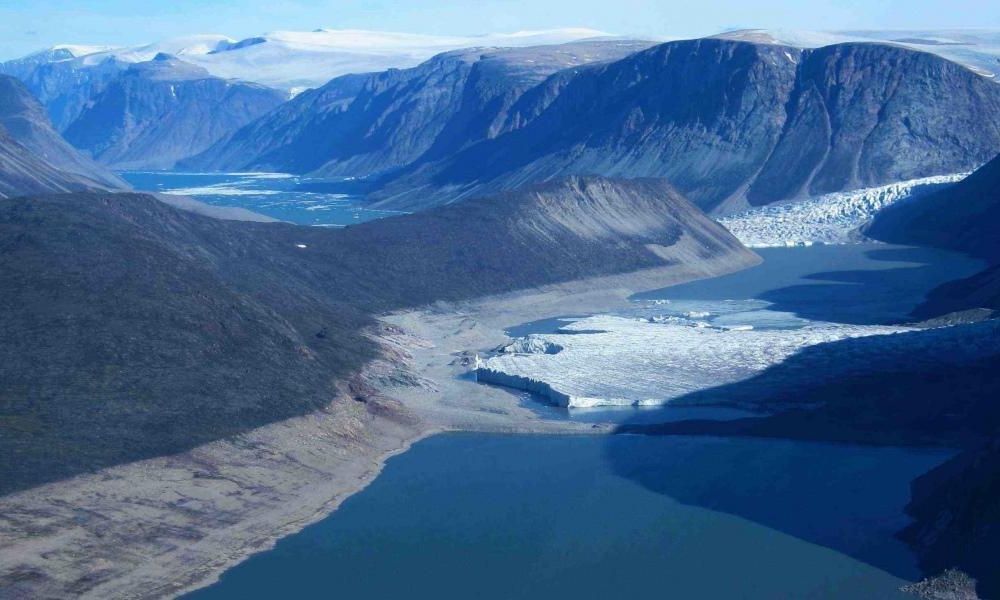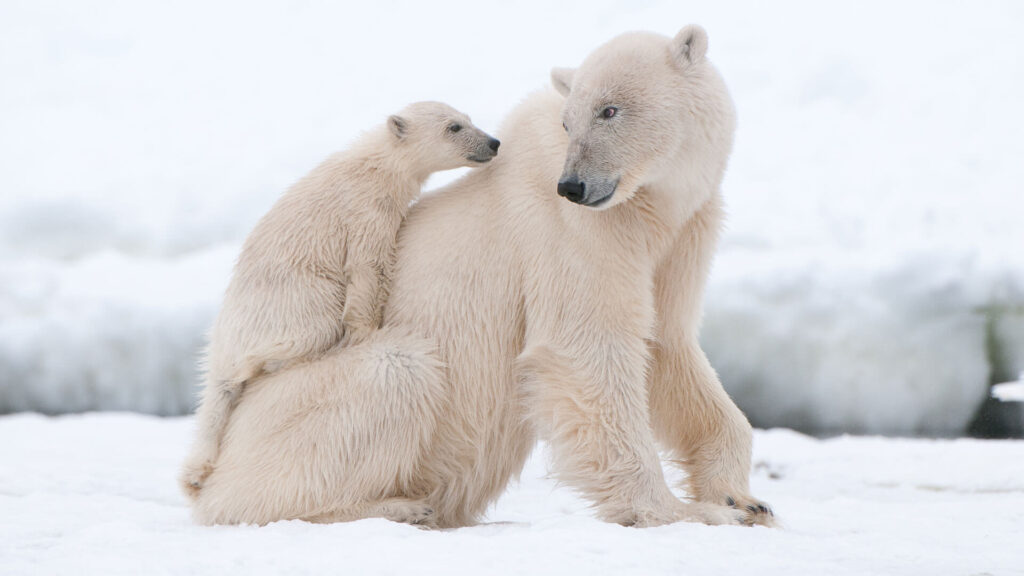Baffin Island and Iqaluit: Exploring Canada’s Arctic Jewel
Baffin Island and Iqaluit are significant regions in Canada, with unique geography, culture, and history that make them important for both the country and the world. In this article, we will provide a comprehensive overview of Baffin Island and Iqaluit, covering topics ranging from geography and climate to history and culture, as well as the economy, infrastructure and services, environment and conservation, and tourism and recreation.

About Baffin Island
Baffin Island is the largest island in Canada and the fifth-largest island in the world, located in the northernmost part of Nunavut, a territory of Canada. Iqaluit, the capital of Nunavut, is located on the southeast coast of Baffin Island. The region is of significant importance for Canada and the world, both in terms of its geography and its culture. In this article, we will provide a comprehensive overview of the region, including its geography and climate, history and culture, economy and employment, infrastructure and services, environment and conservation, and tourism and recreation.
Geography and Climate
Baffin Island is located in the Arctic region of Canada and is surrounded by the Arctic Ocean, Davis Strait, and the Baffin Bay. It has a rugged topography and is home to many geological features, including fjords, glaciers, and mountains. The highest peak, Mount Odin, stands at 2,147 meters. The island covers an area of 507,451 square kilometres and has a population of around 11,000 people.
The climate of the region is characterized by long, cold winters and short, cool summers. Temperatures can drop as low as -40°C in the winter, while summer temperatures typically range between 5°C and 15°C. Precipitation is generally low, with most of it falling as snow.
Climate change is having a significant impact on the region, with rising temperatures and melting sea ice affecting the environment and the livelihoods of local residents. The melting of sea ice has also made the region more accessible to shipping and resource extraction, which presents both opportunities and challenges for the region.
History and Culture
Baffin Island and Iqaluit have a rich history, with evidence of human habitation dating back thousands of years. The region has been home to the Inuit people for centuries, and their culture and traditions continue to play an important role in the region today. The Inuit have faced many challenges over the years, including colonialism, residential schools, and the loss of language and culture. Today, there are ongoing efforts to preserve Inuit culture and language in the region.
Economy and Employment
The economy of Baffin Island and Iqaluit is largely based on resource extraction, including mining and fishing. Tourism is also an important industry in the region, with visitors attracted to the region’s natural beauty and cultural heritage. In recent years, there has been an increase in Arctic tourism, with Baffin Island and Iqaluit being popular destinations for tourists. The region is also home to some of the world’s largest undeveloped mineral deposits, including gold, silver, and diamonds.
Employment opportunities in the region are limited, with many local residents facing challenges in accessing job opportunities. The unemployment rate in the region is high, and many residents rely on government support. However, there is potential for sustainable economic development in the region, including through the development of renewable energy sources and the promotion of sustainable tourism.
Infrastructure and Services
Iqaluit is the largest community on Baffin Island and serves as the capital of Nunavut. It is home to key infrastructure and services, including transportation, healthcare, and education. The Iqaluit International Airport provides daily flights to Ottawa and Montreal, and there are also regular flights to other communities in the region. The city also has a port that serves as a transportation hub for goods and supplies to other communities in the region.
However, local residents face challenges in accessing basic services, with many communities in the region lacking access to clean drinking water and adequate housing. In addition, the cost of living in the region is high, which can make it difficult for many residents to afford basic necessities. There are ongoing efforts to improve infrastructure and services in the region, including through the development of new transportation infrastructure and the expansion of healthcare and education services.
Environment and Conservation
Baffin Island and Iqaluit are home to many unique species of wildlife and marine life, and the region is of significant ecological importance. The island is home to several species of wildlife, including polar bears, narwhals, walrus, and arctic foxes. In addition, the surrounding waters are home to many species of fish and marine mammals, including beluga whales, bowhead whales, and seals.
However, the region is also facing significant environmental challenges, including the impacts of climate change and resource extraction. The melting of sea ice is affecting the region’s wildlife and marine life, and there are concerns about the impact of resource extraction on the region’s natural environment. There are ongoing efforts to protect and conserve the environment in the region, including wildlife and marine conservation.

Tourism and Recreation
Baffin Island and Iqaluit are popular tourist destinations, attracting visitors from all over the world. The region offers a unique combination of natural beauty and cultural heritage that is hard to find anywhere else.
Interesting Facts and Data
- Auyuittuq National Park is a popular destination for hikers and outdoor enthusiasts, featuring spectacular scenery, including glaciers, fjords, and towering mountains. The park is also home to a variety of wildlife, including caribou, arctic wolves, and polar bears.
- Sirmilik National Park, located in the northern part of Baffin Island, is home to the largest seabird colony in the Canadian Arctic. The park is also home to many species of marine mammals, including beluga whales and narwhals.
- The community of Pangnirtung is known for its traditional arts and crafts, including carvings, prints, and textiles. Visitors can take cultural tours and visit local art studios to learn more about Inuit culture and traditions.
- Arctic tourism has been growing in recent years, with Baffin Island and Iqaluit being popular destinations for tourists. According to Nunavut Tourism, the number of visitors to the region has been steadily increasing, with over 7,000 visitors in 2021-2022.
Exploring Canadian Culture Through Online Gaming
As visitors immerse themselves in the natural and cultural wonders of Baffin Island and Iqaluit, they can also discover another facet of Canadian entertainment: online casinos. The digital landscape offers tourists and locals alike the opportunity to experience Canada’s vibrant gaming culture. Online casinos in Canada feature a variety of games that cater to everyone, from beginners to seasoned players, including games inspired by the rich history and wildlife of the Arctic. This unique blend of traditional and modern entertainment allows visitors to enjoy a holistic Canadian experience, from exploring the great outdoors to engaging in the nation’s favorite pastimes. For those interested in learning more about Canada’s top online casinos and how to participate responsibly, visit this page.
Sustainable Tourism
While tourism is an important industry in the region, it can also have negative impacts on the environment and local communities. There are ongoing efforts to promote sustainable tourism in the region, including through the development of eco-tourism and cultural tourism.
Eco-tourism involves promoting responsible travel and minimizing the negative impact of tourism on the environment. This can include activities such as wildlife viewing, hiking, and cultural tours that are designed to minimize environmental impact.
Cultural tourism involves promoting local culture and traditions while providing economic benefits to local communities. This can include activities such as visiting local art studios, participating in traditional activities such as hunting and fishing, and learning about Inuit culture and traditions.
FAQ
Baffin Island is located in the northernmost part of Nunavut, a territory of Canada.
The capital city of Nunavut is Iqaluit.
The weather in Iqaluit is characterized by long, cold winters and short, cool summers. Temperatures can drop as low as -40°C in the winter, while summer temperatures typically range between 5°C and 15°C.
Some popular tourist destinations in the region include Auyuittuq National Park, Sirmilik National Park, and the community of Pangnirtung.
Job opportunities in the region are largely based on resource extraction, including mining and fishing. There are also job opportunities in the tourism industry and in the public sector.
Local residents in the region face challenges in accessing basic services, including clean drinking water and adequate housing. There are also challenges in accessing job opportunities and affordable living.
